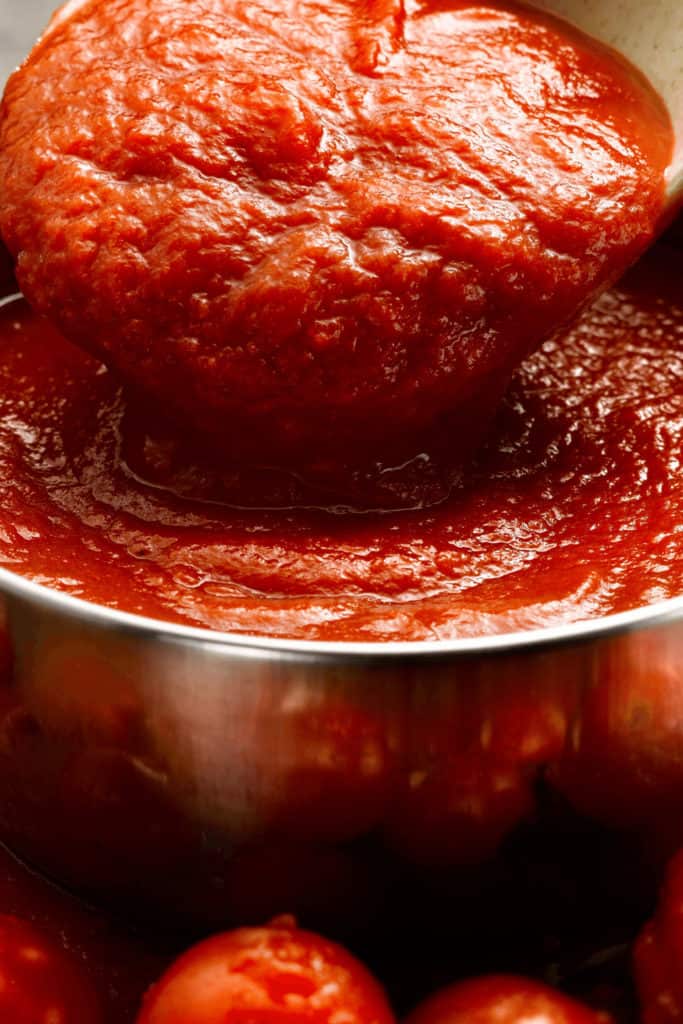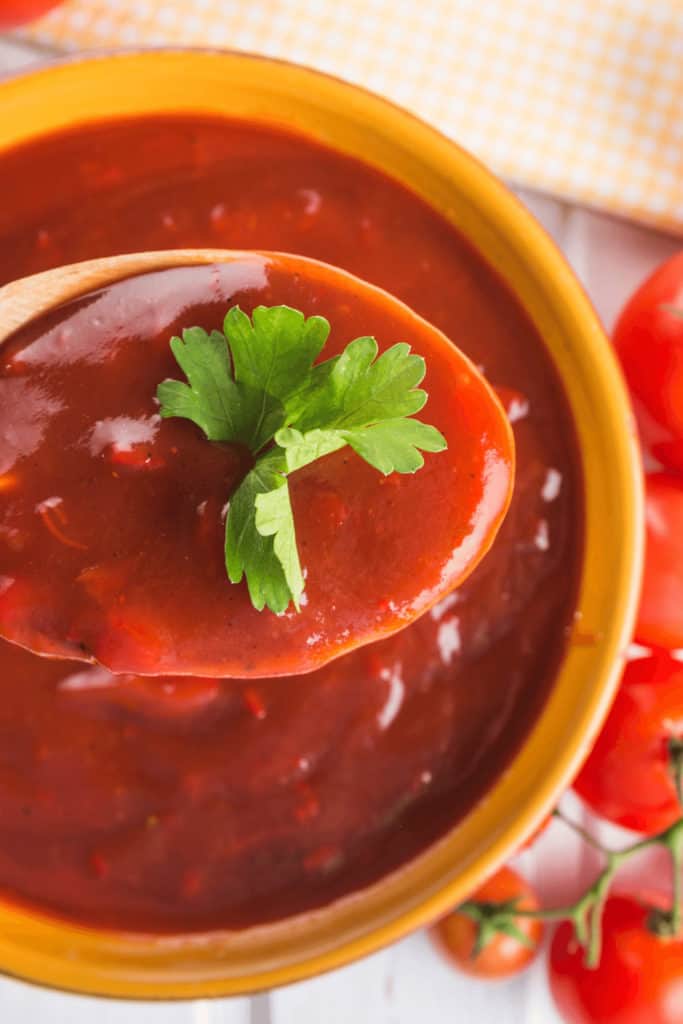Worried about the moldy tomato paste, I noticed that only half the tomato paste had mold on it. Is the un-moldy part of tomato paste still safe to eat?
My friend Dan is a doctor, so I rang him up, and he had some great advice that saved our lives.
Is the Un-Moldy Part of Tomato Paste Still Safe to Eat?
It is not safe to eat the un-moldy part of tomato sauce. While some mold types are quite harmless to most people, the chance always exists that you may be sensitive or allergic to the mold growing on your food. Even a few spores could send you into anaphylactic shock. Mold extends to more than just the visible part of the mold colony. It also has micro-roots and spores that extend throughout the whole of the item it has grown on. While you may believe you are eating mold-free food since you scraped or cut away the mold, you are actually ingesting substantial quantities of mold spores.

What Is Mold?
Firstly, my friend explained just what mold was. Mold is a fungal organism that digests the material it grows on. To do this, the mold creates small micro roots that stretch throughout the substrate (or tomato paste in this case). Wherever these roots grow, they release more spores, which grow and expand the mold colony.
In fact, mold can grow so fast that it literally looks like it’s grown overnight. While the tomato paste had been fine a few days ago, it had now become completely infected with mold.

The Origins of Mold
Now, I had been taught that a refrigerator is supposed to keep food fresh, so how did my lovely can of tomato paste become infected with mold when I had just used it and left it in the fridge? Dan shocked me by telling me that most foods already have some mold spores in them.
What?
That’s right. Mold spores are so small that they travel through the air and latch onto anything they come into contact with. For the most part, mold spores land on things they can’t grow on like people and objects that get washed. However, mold spores can land on food too, and when the conditions are ripe, these spores have a lot of growing power in them.
The mold spores had been in my tomato paste all along. When I opened the can, I created the right environment for the mold to grow. Mold needs air to grow. The opened tomato paste can exposed the mold spores to oxygen, which triggered growth.

Why Moldy Food Needs to Be Discarded
Moldy food needs to be thrown away. It is not advisable to eat food where the mold spores have begun growing. These spores can easily trigger an allergic reaction or cause asthma, and you could develop a serious health condition. Simply sniffing at the food to determine if it is “off” can lead to an allergic reaction as mold colonies release mold spores constantly.
Even baking moldy food or cooking the “un-moldy” tomato paste would not make it safe to eat. Considering that there may be seriously harmful mold growing on my tomato paste, I decided to throw the can out and opted for a new jar of tomato sauce instead.
My recipe didn’t quite taste the same, but at least my guests didn’t suffer food poisoning.
Over dinner, one of my guests shared how she keeps her food mold-free, and I was excited to try her tips.

Tips to Keep Food Mold-Free
Since mold needs air to grow, it is simple to ensure you keep your food in anaerobic conditions where there is no air around the food. Mold also struggles to grow in temperatures below freezing. This is why the food in your freezer won’t go moldy.
Freezing to Prevent Mold Formation
For tomato paste, you can scoop spoonfuls of the tomato paste onto a baking sheet lined with baking paper. Freeze these until the spoon-sized servings are frozen solid. Then wrap them in saran wrap or in a Ziploc bag. Use these frozen tomato paste scoops as needed.
Oil Coating to Limit Oxygen Exposure
Okay, so the mold is perfectly safe and inactive while the tomato paste tin is unopened. So, once you have opened the tin, simply spray the top layer with olive oil or add a spoonful of olive oil to the paste tin, swirling until all of the exposed tomato paste has been coated with oil. Since there will be no air in contact with the tomato paste, the mold spores can’t grow.
Decant the Unused Tomato Paste
Since the tin is now open, the tomato paste will go bad. However, if you use a Ziploc bag and pour the tomato paste into the bag, you can nip one corner of the bag as a means for dispensing tomato paste. To seal the bag air tight, simply flatten the used section and fasten the cut corner with a clothes peg or tape it down with sticky tape.

Frequently Asked Questions About Is the Un-Moldy Part of Tomato Paste Still Safe to Eat
Can you eat the non-moldy part of a tomato?
Food that has been exposed to mold or has formed spots should be thrown away and not be eaten. Mold spreads through the whole of the food it has taken root in.
How can you tell if tomato paste is bad?
The tomato paste will develop a distinct scent when it has begun to ferment or decompose from moldy actions. Bad tomato sauce will have a distinct sour smell.
How long after eating mold will I get sick?
This depends on the type of mold you ingested, and whether you are allergic to that type of mold. The reaction time to mold spores can be anything from a few hours to a few days.
Conclusion About Is the Un-Moldy Part of Tomato Paste Still Safe to Eat
I was relieved I had thrown out the can of tomato paste instead of trying to scrape the mold off. While I noticed some online food critics advised that you could simply do just that, I decided that it wasn’t worth the risk of suffering food poisoning or an allergic reaction afflicting one of my guests.
Mold is a prolific microorganism, and it spreads rapidly. To keep my tomato paste and other condiments fresh, I either freeze portion sizes or coat them with olive oil to preserve an oxygen-free environment.
Read next: Moldy food left in the oven, is it safe to cook?

